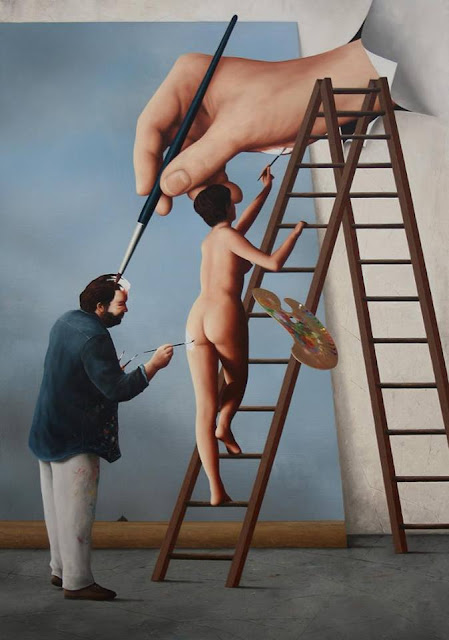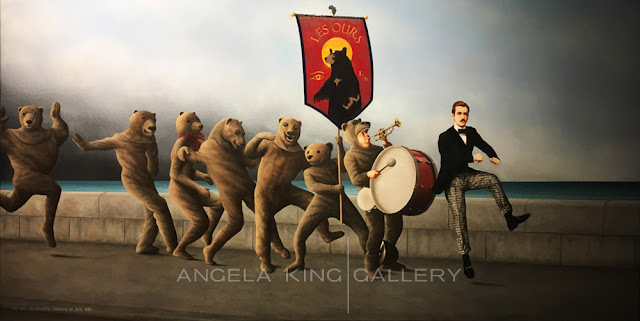Raymond Douillet
.
Raymond Douillet was born on July 20th 1947 — on the very day of the Tour de France cycle race arrival — in Hautmont, in the North of France. This small town is separated from Maubeuge by a river, the Sambre. Maubeuge is Jan Gossaert's, also named Jean de Mabuse (c 1478-1532), native town. He introduced the spirit and shapes of the Italian Renaissance into Northern Gothic Art by going through Dürer’s decisive influence. Almost four centuries and a half later, Raymond Douillet, unaware of it at the beginning, followed his prestigious predecessors’ footsteps. This is what could be called, owing to André Breton’s phrase, an « objective coincidence » : from one painter to the other, this relationship, which was fortuitous at the beginning, is now shared within a space configuration which has more than one thing in common. Everything works out as if Mabuse’s formula found an echo in Raymond’s paintings, a set up « mirrorical return » in accordance with a singular catoptric where combined coincidence and time would be the project managers.
If the Sambre is the river which draws together Raymond Douillet and Jean de Mabuse beyond time, it is also the link with René Magritte when flowing through nearby Charleroi. It is in 1912 in the Sambre in Charleroi that Magritte’s mother’s body was recovered, and it is also in this town that his first impressionistic-painted works came into being.
Working at his studio in an old coaching inn among the fields of a French farm community, the artist creates works unparalleled in their quality and attention to detail. Viewers are often surprised to learn that the models who people the artist’s canvases are not highly-paid models, but rather, common townsfolk, close friends, and most often family. Their poses are incorporated into the overall architectural framework of the pieces, or, as in the case of smaller works, their movements and expressions can become this framework. And while the true meaning of the finished work is left to the viewer to determine, Douillet frequently paints to show us parallels between verbal and physical expression, as well as commonalties between the English and French languages: a game we refer to as double entendre.
Douillet has been a member of the Salon des Artistes Francais since 1975 and the Salon d’Automne since 1978. His paintings grace a number of important corporate and private collections worldwide.
資料來源 Angela King Gallery

























留言
張貼留言